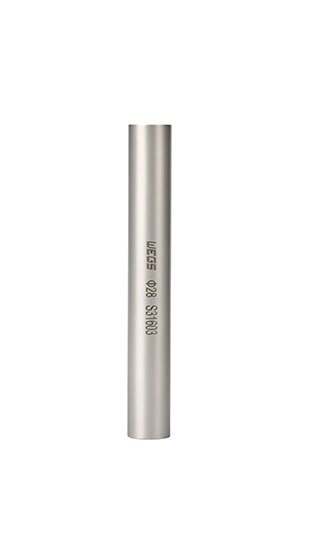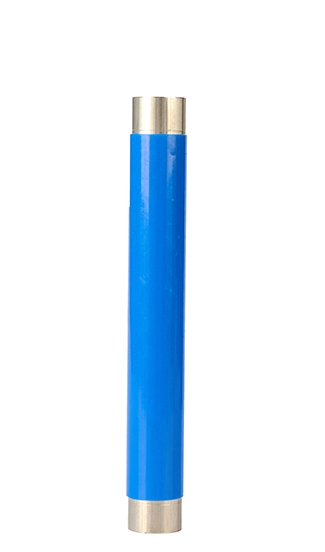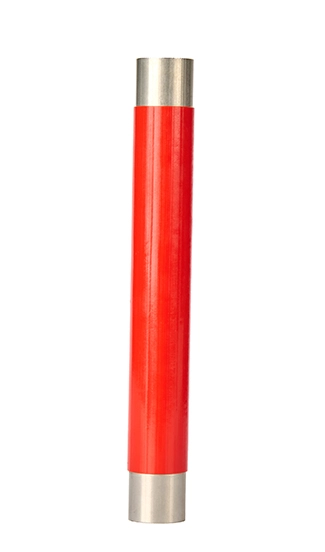Stainless steel pipe & tube are categorized into: Stainless steel pipe such as high pressure stainless steel tubing, plastic coated stainless steel cold water pipe, and plastic coated stainless steel hot water pipe. Stainless steel tubing can be subdivided into 10mm stainless steel tube, 16mm stainless steel tube, 38mm stainless steel pipe, 44mm stainless steel tube, etc. According to the outer diameter. These stainless tube pipes are widely used in various applications including high-end hotels, hospitals, natural gas, air compression, municipal services, fire protection, food and beverage industries, ships, and building construction for direct drinking water, cold and hot water, tap water systems, and more. In addition, WEGS offers custom stainless steel pipe.



Confirm the required cutting length. It is advisable to use a dedicated electric pipe cutter, manual pipe cutter, or cutting knife; it is not advisable to use high-temperature cutting tools such as grinding wheel cutters. When it is necessary to use a grinding wheel cutter, the following requirements should be met:
a. Use a grinding wheel disc specially designed for stainless steel;
b. The grinding wheel cutter should be dedicated to cutting stainless steel pipe & tube and not used for cutting other metal pipes. The stainless tube pipe should not lose its roundness after cutting. The end face of the cut stainless steel tube should be flat and perpendicular to the stainless tubing axis.
Use a deburring tool to clean the inner and outer burrs of the cut end face, or use a file to trim the stainless steel tube mouth to eliminate sharp burrs. Iron filings produced during cutting should be cleaned up. It is strictly forbidden to use high-temperature methods for deburring.
Purpose of deburring:
a. To prevent the stainless steel tubing from scratching the sealing ring when inserted into the fitting;
b. Burrs remaining inside the pipe can lead to the accumulation of impurities at the burr location, posing a risk of pipe stainless tube steel.
Before inserting the stainless steel tube into the fitting, mark the insertion depth on the stainless tube steel to prevent the pipe from not being inserted properly during construction.
Inspect the sealing ring within the pipe fittings to ensure there are no missing parts, no contamination, misalignment, or similar issues. The socket end inside the pipe fittings and the pipe end itself should be wiped clean, free from oil, mud, sand, or any other debris.
Slowly insert the stainless steel pipe & tube into the fitting socket. The depth of the socket should match the marked line, with an adjustment not exceeding 3mm. Do not insert at an angle to avoid misplacing or damaging the sealing ring.
Use the corresponding press-fitting tool for crimping. Align the jaws' groove with the protruding arc groove of the fitting, and ensure the jaws are perpendicular to the pipe fitting before proceeding with the crimping operation.
a. The jaws must be fully closed (no gap between the jaws, confirmed by the absence of light passing through);
b. The crimping pressure must not exceed the limit (maximum of 63MPa).
Dimensions: Use a dedicated gauge (which can be self-made) to measure the product after crimping.
Appearance: The crimped area should be neat, without any obvious wrinkles, dents, or compression damage.
Intended Use: Identify the specific application for which the stainless steel pipe & tube will be used. Different applications may require different properties, such as corrosion resistance, strength, or flexibility.
Environmental Conditions: Consider the environment in which the stainless tube pipe will be installed. Factors such as exposure to chemicals, temperature variations, and humidity levels can influence the type of stainless steel needed.
Common Grades: The most commonly used grades are 304 and 316 stainless steel. Steel pipe 304 is suitable for general-purpose applications, while 316 stainless steel pipe offers enhanced corrosion resistance, making it ideal for marine and chemical environments.
Specialty Grades: For specific applications, you may need specialty grades like 321 for high-temperature environments or 904L for extreme corrosion resistance.
Seamless stainless steel pipe & tubes: The stainless steel tube standard is manufactured without a seam, providing higher pressure ratings and better uniformity. They are ideal for high-pressure applications and critical environments.
Welded stainless steel pipe & tube: These are made by welding a strip of stainless steel into a tube. The crimped stainless steel pipeworks are generally more cost-effective and suitable for lower-pressure applications.
Diameter and Length: Ensure the stainless steel pipe & tube’s diameter and length meet the project specifications. Standard sizes are available, but custom dimensions can also be ordered.
Wall Thickness: The wall thickness affects the stainless tube pipe's strength and durability. Thicker walls are suitable for high-pressure applications, while thinner walls are adequate for less demanding uses.
